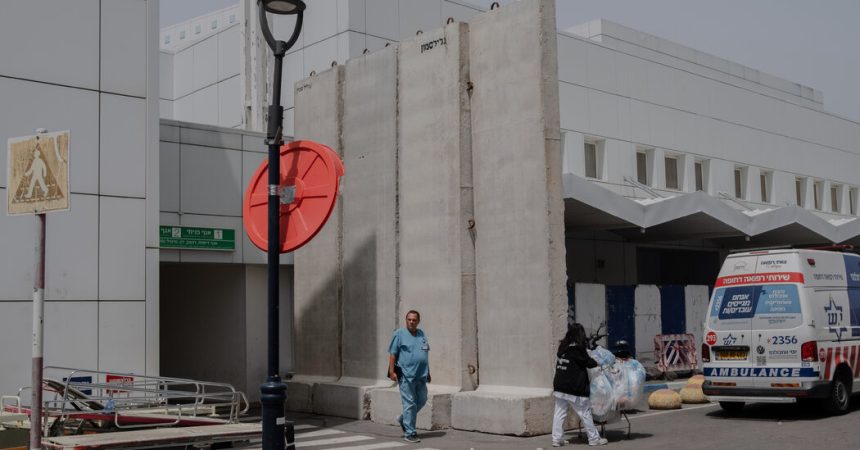
Concrete barricades outside one of the entrances to Galilee Medical Center in northern Israel in April.Credit…Amit Elkayam for The New York Times
The entrance hall to the Galilee Medical Center in northern Israel is mostly empty and quiet. Roaring warplanes and the intermittent thunder of artillery have replaced the sounds of doctors, orderlies and patients at this major hospital closest to the border with Lebanon.
Nearly all of the hospital’s staff members and patients have gone underground.
Getting to the hospital’s nerve center these days involves navigating past 15-foot concrete barricades and multiple blast doors, then descending several floors into a labyrinthine subterranean complex.
That is where thousands of patients and hospital workers have been for the past six months as strikes have intensified between Israeli forces and Hezbollah, the powerful Iranian-backed militia in Lebanon, just six miles to the north.
The underground operation at Galilee Medical Center in Nahariya is one of the most striking examples of how life in northern Israel has been upended since Hezbollah began launching near-daily attacks against the Israeli military in October in solidarity with Hamas, the Iranian-backed group that led the attack on southern Israel that month.
The cross-border fire has prompted tens of thousands of Israelis to evacuate towns, villages and schools and forced factories and businesses to close. On the Lebanon side of the border, tens of thousands more have fled their homes.











